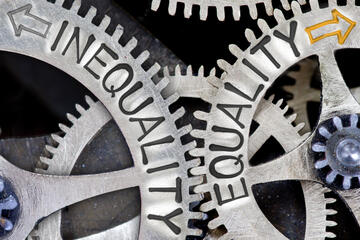
Based on sample data from the 2018 Reuters Digital News Report, the factsheet examines social inequality in news consumption (online and offline) in the United Kingdom, focusing on the number of news sources respondents say they use on a weekly basis. Authors Antonis Kalogeropoulos and Rasmus Kleis Nielsen aim to understand whether information inequality is associated with a more digital media environment.
The findings suggest that news consumption is more unequally distributed in the UK than income is. Online news consumption is more unequally distributed than offline news consumption, as one in four individuals do not consume news online (25%).
A key difference exists in terms of access to news online: the lower the social status, the less likely individuals are to go directly to news providers. Direct discovery turns out to be more common for individuals of higher social status. As social media and search engines drive ‘incidental exposure’ to news, they should therefore ensure that all online news users see at least some news irrespective of social status.
Finally, authors warn that the subject should not be overlooked. “Whereas widely used television channels and popular tabloid newspapers […] are among the factors that help reduce information inequality offline (Aalberg and Curran 2012), we have found no similar patterns online”.

